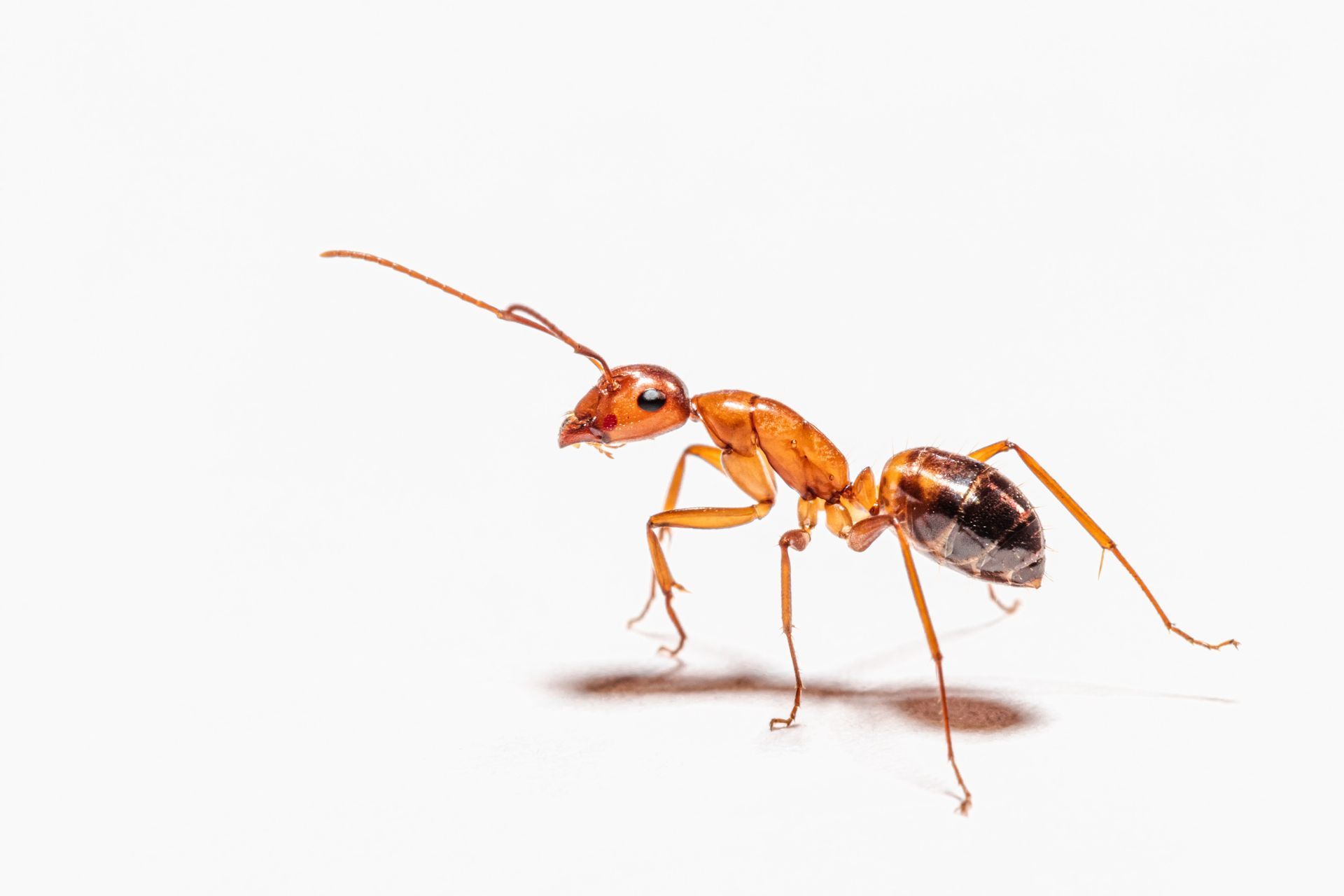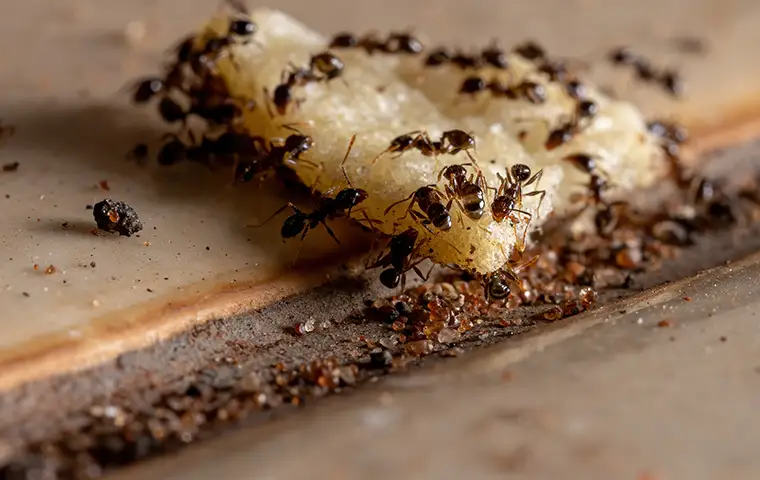Ant Control Services
Ant Treatments for all Types of Species
Fire Ants:
Controlling fire ants, known for their aggression and painful stings, requires a multifaceted approach due to their adaptability. Traditional chemical treatments face challenges, prompting the use of integrated pest management (IPM) practices. This includes combining chemical control with biological methods, introducing natural enemies like parasitic flies, and incorporating cultural practices such as regular lawn maintenance.
Ongoing research is crucial for developing innovative and sustainable solutions, while public awareness campaigns play a vital role in early detection and reporting of fire ant infestations.
Collaboration between pest control professionals, researchers, and the public is essential for successful fire ant management in both residential and agricultural settings.

Crazy Ants:
Crazy ants, scientifically known as Nylanderia fulva, are invasive pests with erratic movements, challenging traditional pest control methods. Originating from South America, they have become a global nuisance, requiring a multifaceted approach for effective management.
Conventional pesticides face challenges due to the ants' rapid adaptability, prompting the need for integrated pest management that combines chemical, biological, and mechanical strategies. Biological controls, such as introducing natural predators, and mechanical barriers, like sealing entry points, contribute to a comprehensive approach.
Ongoing research and collaboration between pest control professionals, researchers, and communities are essential to address the adaptability of crazy ants and mitigate their impact sustainably. Public education on preventing the unintentional spread of these pests is also crucial in the overall pest control effort.

Carpenter Ants:
Controlling carpenter ants involves a targeted approach due to their wood-nesting habits and potential for structural damage.
Pest control methods include chemical treatments like baits and dust formulations, addressing moisture issues to deter infestations, and seeking professional assistance for accurate identification and long-term prevention.
Regular inspections, prompt repairs, and educating homeowners about signs and early intervention contribute to an integrated pest management (IPM) strategy for effective carpenter ant control.



Share On: